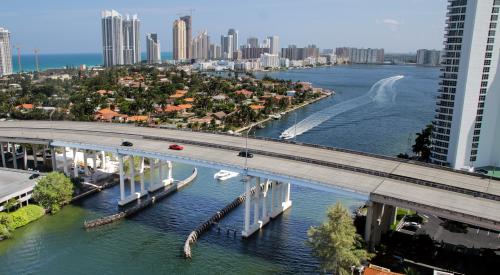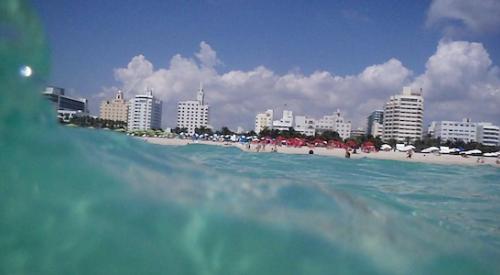In the political realm, climate change may be up for debate, but in housing, its effects are being defined and quantified. Two new reports published this spring lay out how sea level rise (SLR) is shifting home values by elevation.
Labeled “climate gentrification,” a new paper from the Harvard University Graduate School of Design uses Miami-Dade County as a case study to flesh out the descriptive theory’s ramifications. The findings validate not only that higher home-price appreciation correlates to higher elevations, but also that, in terms of appreciation, homes at lower elevations haven’t kept up since about 2000. What’s more, the authors write, the study suggests that consumer preferences may be based in part on “perceptions of flood risk, and/or observations of flooding.”
Meanwhile, a paper jointly published by the University of Colorado, Boulder, and Pennsylvania State University titled “Disaster on the Horizon: The Price Effect of Sea Level Rise,” says that properties exposed to SLR face an average 7 percent discount on the home’s sale, relative to other properties in the same area, and that the discount share is increasing over time. Rental rates were not shown to be similarly affected by SLR.
Also defined in “Disaster on the Horizon” are the ways in which different buyer types alter the discount share. Property investors are deemed to be more sophisticated homebuyers, and garner an 11 percent average SLR exposure discount that is rising over time. The SLR exposure discount for less sophisticated buyers—owner-occupiers—varies by region based on how worried residents are about the effects of climate change.
The paper’s authors conclude that, “the way in which investors perceive and discount … disasters is central to [various] public policy debates.” By pricing out SLR risk, the authors say that there is less opportunity for transfer of wealth between homeowners and for price volatility destabilizing the market in the future.













